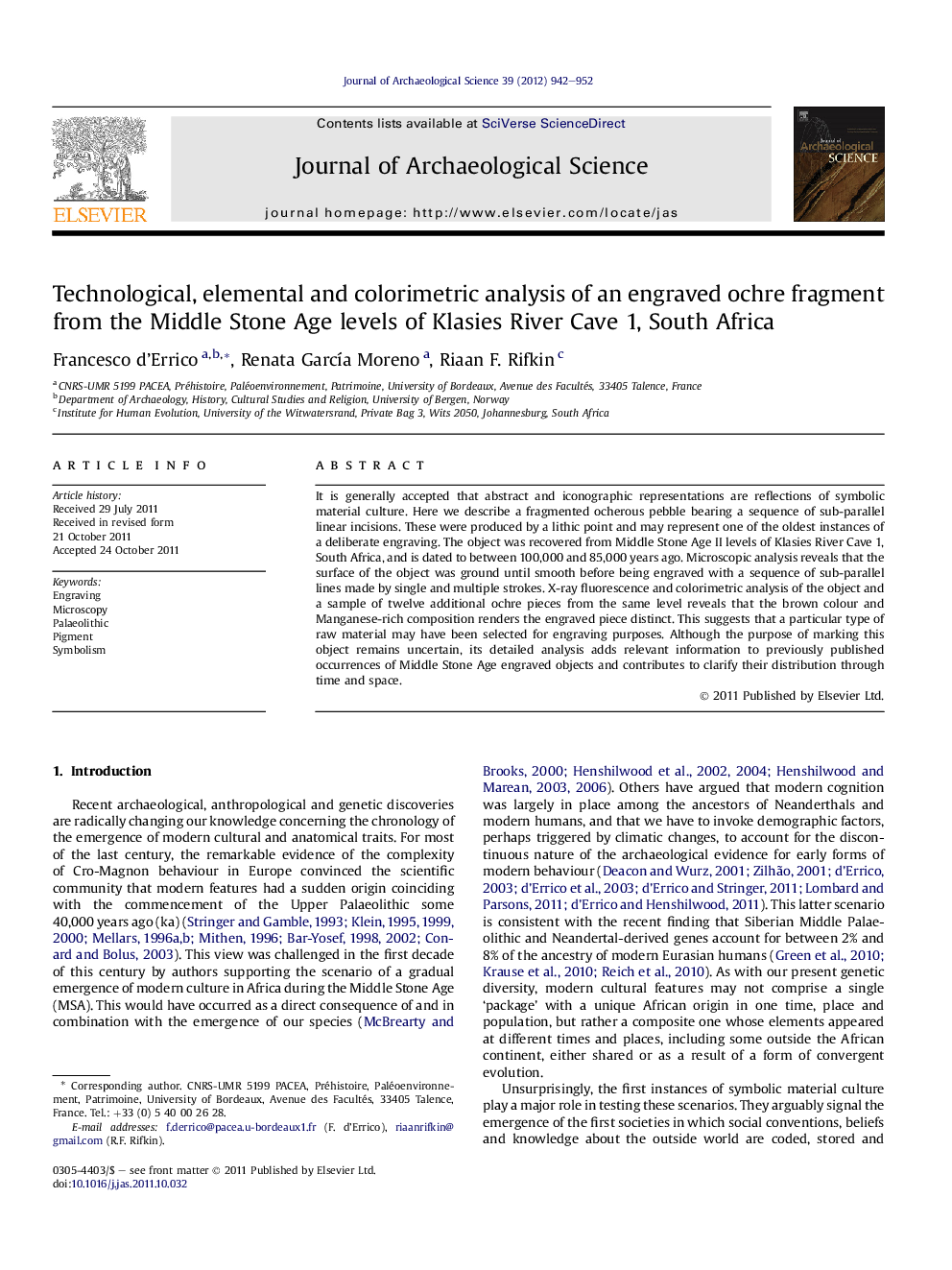| Article ID | Journal | Published Year | Pages | File Type |
|---|---|---|---|---|
| 1035586 | Journal of Archaeological Science | 2012 | 11 Pages |
It is generally accepted that abstract and iconographic representations are reflections of symbolic material culture. Here we describe a fragmented ocherous pebble bearing a sequence of sub-parallel linear incisions. These were produced by a lithic point and may represent one of the oldest instances of a deliberate engraving. The object was recovered from Middle Stone Age II levels of Klasies River Cave 1, South Africa, and is dated to between 100,000 and 85,000 years ago. Microscopic analysis reveals that the surface of the object was ground until smooth before being engraved with a sequence of sub-parallel lines made by single and multiple strokes. X-ray fluorescence and colorimetric analysis of the object and a sample of twelve additional ochre pieces from the same level reveals that the brown colour and Manganese-rich composition renders the engraved piece distinct. This suggests that a particular type of raw material may have been selected for engraving purposes. Although the purpose of marking this object remains uncertain, its detailed analysis adds relevant information to previously published occurrences of Middle Stone Age engraved objects and contributes to clarify their distribution through time and space.
► We analyse a 100,000–85,000 years old ochre from Klasies River Cave 1, South Africa. ► The object was ground until smooth before being engraved with a lithic point. ► The engraver has produced a set of parallel lines. ► The object differs in elemental composition and colour from the other ochre pieces. ► It may represent one of the oldest known evidence of deliberate engraving.
